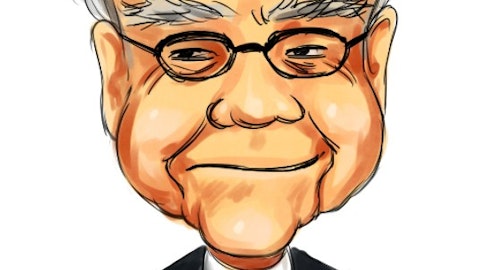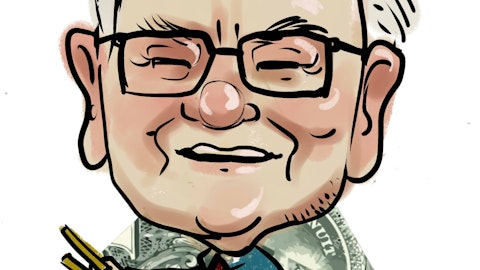The Efficient Market Hypothesis is like Japanese centenarians- they’ve been dead for more than a decade or two but still listed as “alive” in records so that someone can collect their pension payments. According to official records, there are 884 people who are 150 years or older in Japan. Utterly ridiculous. The efficient market hypothesis has been dead for nearly a quarter century as well, yet it has not been declared “dead” in textbooks – so some people still collect dividends on the now debunked theory. Yes, debunked, read on.
It all started in the sixties when a young and eager student – Eugene Fama – couldn’t come up with profitable stock trading criteria, so he concluded that if he can’t find a profitable pattern to beat the stock market, then no one can. Here is how he describes it:
When I was at Tufts, I was working for a professor who had a stock market forecasting service. My job was to devise rules for predicting the market, and I was very good at it. But he was a pretty good statistician. He always told me to set some data aside so I could test [the rules] out of sample. And they never worked out of sample.
So when I came to the University of Chicago and people were talking about these things, it suddenly dawned on me that maybe that was the nature of the game, that there just wasn’t much predictability of returns because markets were working efficiently. That was the beginning of the story.
According to Fama, the Efficient Market Hypothesis simply says that stock prices reflect all available information. You could guess how this was such a huge relief for millions of stock market investors. When buying stocks you needn’t worry about timing or any other stock picking skills anymore. Since all the information is incorporated into stock prices, there was no need for you to research the companies or macro economic developments, or the regulatory environment, or anything else. Nothing, nada. Do you want to invest in an internet start-up that sells toys, with $30 Million in revenue, $50 Million in losses and $6 Billion in market cap? Don’t worry. Markets are efficient. Just buy it, it’s as simple as that. Sure- stocks are still risky investments. They fluctuate. But as long as you’re diversified, you don’t have to worry about anything. This was the basic premise of the Efficient Market Hypothesis. So basic and simple that even a caveman can understand it.
A direct result of the propagation of the Efficient Market Hypothesis was the emergence of index funds. John “Jack” Bogle’s Vanguard is the largest mutual fund in the country today and significantly benefits from the popularity of the Efficient Market Hypothesis. To be fair, index funds have done a great public service to naive investors who on their own manage to find the worst investments on the face of the planet. (See how individual investors manage to lose money in the stock market)
The first real challenge to the Efficient Market Hypothesis came from Basu (1977) and later confirmed by Reinganum (1981): there is a positive relationship between earnings yield (inverse of the P/E ratio) and stock returns. Basically, you could buy low P/E stocks and manage to beat the stock market returns.
The second major blow came from Banz (1981) who found a negative relationship between stock returns and the market cap of a stock. You didn’t need any accounting variables to produce the size effect; it’s just the market value. Buy stocks with the lower market cap and you can beat the stock market returns. This seems like such a simple strategy that we wonder why nobody thought of it until then!

Of course there have been practitioners, such as the legendary value investor Warren Buffett and other value investors, who have been successfully exploiting these two anomalies for decades and also producing additional excess returns. In 1984, Warren Buffett gave a speech at the Columbia Business School mocking the Efficient Market Hypothesis by pointing that value investors following Graham and Dodd performed spectacularly. He put it bluntly on the faces of clueless professors with the following words:
“By then some business school professor will probably be rude enough to bring up the fact that if 225 million orangutans had engaged in a similar exercise, the results would be much the same – 215 egotistical orangutans with 20 straight winning flips.
But, there are some important differences in the examples I am going to present. For one thing, if (a) you had taken 225 million orangutans distributed roughly as the U.S. population is; if (b) 215 winners were left after 20 days; and if (c) you found that 40 came from a particular zoo in Omaha, you would be pretty sure you were on to something. So you would probably go out and ask the zookeeper about what he’s feeding them, whether they had special exercises, what books they read, and who knows what else. That is, if you found any really extraordinary concentrations of success, you might want to see if you could identify concentrations of unusual characteristics that might be causal factors.”
Warren Buffett was right. At the time he had more than 20% in annual alpha that can’t be explained by CAPM, or any other models that would be developed over the following 25 years. If you believe in the Efficient Markets Hypothesis, what do you think is the probability of an investor who managed to have an annual alpha of 20% for nearly 30 years to continue to generate double digit alpha for another 20 years? Put away your calculators, the answer is zero. (See more about Warren Buffett’s Alpha)
Warren Buffett was onto something that professors had not yet discovered: the value effect. In 1985, Rosenberg, Reid and Lanstein, and in 1987 DeBondt and Thaler documented a significant positive relation between returns and the book-to-market ratio. Later on, it was shown that P/E effect and book-to-market effect explain the same phenomenon, the value effect, but the B/M ratio did a better job in statistical tests. So this gave way to Fama and French’s famous three factor model. Instead of declaring the Efficient Market Hypothesis dead, Fama and French claimed CAPM is dead. They went on to argue that size effect and value effect are actually risk factors that had already been discovered. The combined magnitude of these two factors is so large that it’s bigger than the average market risk premium between 1927 and 2005.
So, essentially there were two big factors explaining stock returns better than the market risk premium did. Fama discovered this a quarter century after his developed his theory. Yet, he doesn’t accept that the Efficient Market Hypothesis is dead?
There’s more. While Fama was working on the three factor model to salvage his debunked Efficient Market Hypothesis, Jegadeesh and Titman were discovering another inefficiency that opens a big hole in the Efficient Market Hypothesis. In their 1993 paper, Jegadeesh and Titman showed that buying past winners and selling past losers generate significant abnormal returns over the following 12 month period. This strategy used only past price data, hence debunking even the weakest form of the Efficient Market Hypothesis (See Low Cost Momentum Funds).
In short, there were three main factors discovered that debunks the original Efficient Market Hypothesis. The size effect, where small firms beat large firms by an average 20 basis points per month between 1927 and 2010, is the smallest of them. The value effect, where stocks with high book-to-market ratios beat the stocks with low BM ratios by an average 48 basis points per month during the same time period, is another. The Momentum effect returns more than do the size and value effects combined. Past winners beat past losers by an average 70 basis points per month between 1927 and June, 2010.
Stock markets are not efficient. If a stock price reflects all available information, it doesn’t do so instantaneously. People who have information (i.e. insiders) or who generate information (i.e. analysts) get compensated in the stock market. The bill is picked up by passive investors who indiscriminately invest in good as well as in bad companies.
Related Articles:
Individual Investors Can Persistently Beat the Stock Market
How Do Individual Investors Manage to Lose Money in the Stock Market





